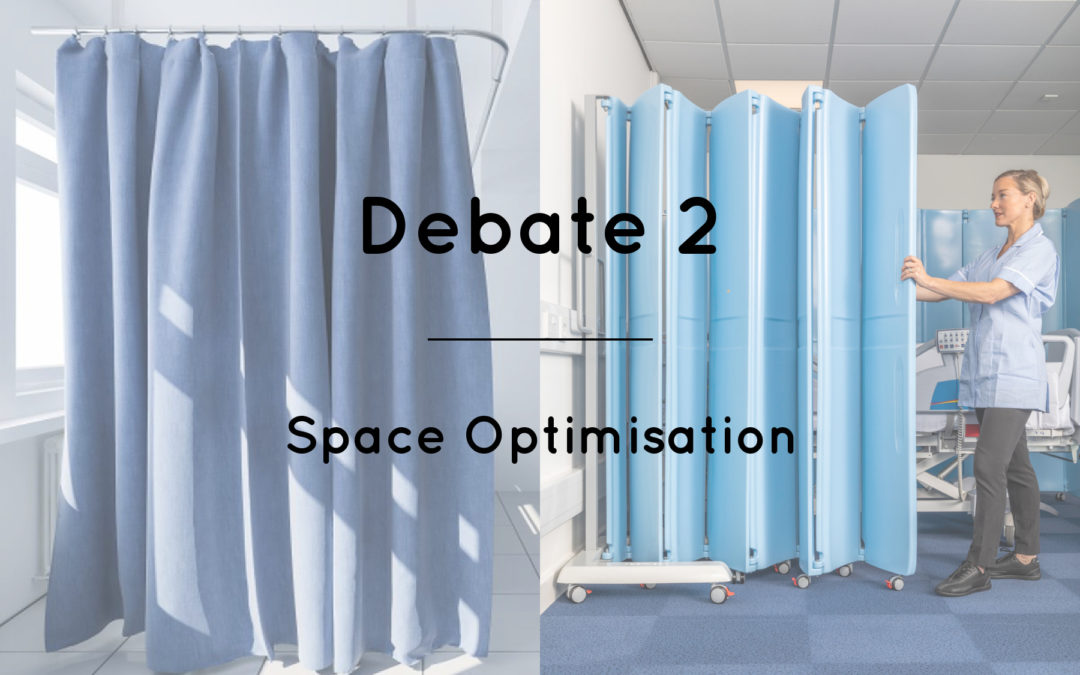Hospital Curtains In Open-Bay Hospital Wards
Patient privacy on public-sector hospital wards has traditionally been created by using curtains on fixed-rail systems to subdivide open bays into multiple patient areas – a cheaper and more practical alternative to providing all patients with their own separate room.
Rail and curtain systems have, however, led to reduced flexibility in increasing available bed spaces on the ward. If more bed spaces are required, the rails must be repositioned or replaced to create smaller cubicles. This takes time (which might be scarce if there is a sudden or exceptional demand for more bed spaces), disrupts the smooth operation of the ward (or forces its temporary closure while work is being carried out), and incurs additional costs.
Medical Screens Are A Totally Mobile Alternative
CleanScreen Medical Privacy Screens from Nojerm can be deployed without the need for permanent fixings, using durable medical-grade castors to move easily into position and folded away, concertina-style, when not in use.
The system also offers a greater level of patient privacy than curtains. The solid construction of the panels allows for no translucency, even when strongly backlit, and standing at almost two metres high and raised only 90 mm above the floor, they create a complete visual barrier. The panels also offer better sound-muffling properties than curtains.
If the CleanScreen system is to be transported over longer distances between buildings or to another site, or placed into long-term storage between use, a separate trolley is used to keep the screen compactly folded and to protect its castors from damage.
Thinking Outside The Ward
It isn’t just in the general hospital ward where health services value the space optimisation of CleanScreen Medical Panels.
In times of emergency such as pandemics, natural disasters and large-scale acts of terrorism require increased patient handling facilities in most departments, including A&E, assessment and treatment areas, radiology and other screening departments, and critical care.
The versatility of a mobile privacy screen system like CleanScreen means that temporary facilities can be quickly and easily set up in other areas of the hospital, or indeed at other locations such as sports halls and community centres, without tools or tradesman skills. These can be used for large-scale operations such as screening and vaccination programs, or even to create a measure of privacy for victims requiring temporary accommodation. When demand for services returns to normal levels, CleanScreen can be folded away and placed in compact storage, or redeployed to another situation or location.
What Does The Future Hold for Healthcare Space Requirements?
Once the coronavirus pandemic has been brought under control, will demand for bed spaces return to pre-pandemic levels and mass treatment centres become a thing of the past?
Both seem unlikely. We are thankful that effective COVID-19 vaccines have been developed, but the scientific community and the World Health Organisation have been warning us for several years about the danger of superbugs developing that are resistant to all antibiotics.
Two secrets of effective crisis management are speed and versatility. CleanScreen offers rapid, adaptable optimisation of patient treatment and accommodation facilities.

